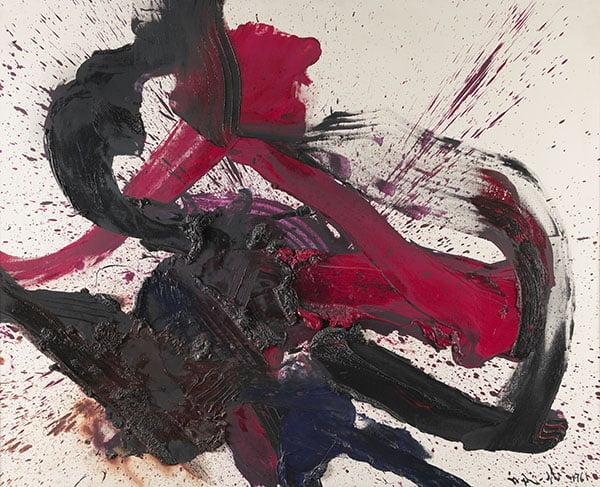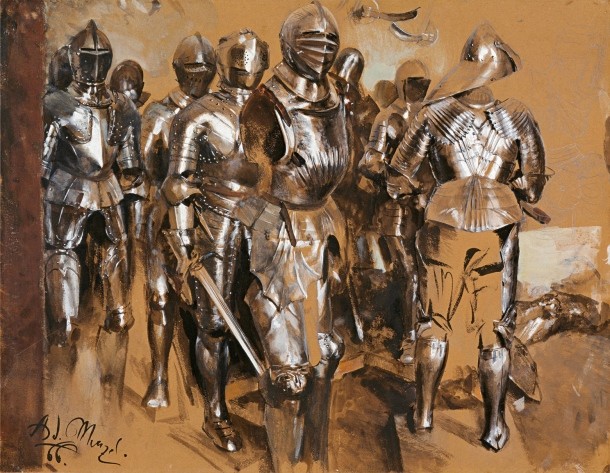Analysis
German Auction Houses Thrive by Embracing Contemporary Market
How do they fend off competition from Christie's and Sotheby's?

How do they fend off competition from Christie's and Sotheby's?

Annegret Erhard

With no fewer than 10 bidders on the telephone, the Munich auctioneer Ketterer Kunst recorded incremental bids for Kazuo Shiraga’s dramatic foot painting, Chijikusei Gotenrai. As it reached €420,000, collector, dealer, and art investor Rüdiger Weng’s patience wore t0o thin and he called out his bid, €800,000, loudly from in the room. The amount was in line with the Japanese Gutai artist’s current market value, yet for a moment, Weng’s rivals stalled. But bidding soon resumed and at €2.6 million, Robert Ketterer let the hammer fall for the 1961 work, selling to a telephone bidder from Hong Kong.
The course of events is a good example of Ketterer Kunst’s current strategy: keep estimates as low as possible. (Shiraga’s painting was projected to sell at €400,000 before the auction’s start.) It’s a clever tactic, allowing the house to consistently report spectacular results. Ketterer made €21.6 million in total this fall off (a bit) of Old Masters and 19th century art and (a lot) of work from the 20th century: Münter works, a choice quality Macke, a Schiele nude which fetched nearly €1 million, and a nail painting by Günther Uecker.
Lempertz also reported record sales this fall. The Cologne-based house holds a market-leading position in the contemporary art market segment, one in which it made €7.1 million this season alone.
Classical modern works form an ever-smaller portion of houses across the board, from Hauswedell & Nolte (Hamburg) and Villa Grisebach (Berlin) to Van Ham (also Cologne) and Karl & Faber (Munich). Buyers are increasingly selective in their bidding for the works and are particularly sensitive to pieces seen too often (if ever) on the market. Works that have been seen at art fairs rarely find buyers, and, when they do, never at high prices.
Though the art market may not be blessed with the greatest level of transparency, price databases featuring international auction results, and surprisingly many less official other sources, keep the clever collector up to date—and some times up to speed.
It is not clear when exactly the auction houses in this part of the world decided to stop bemoaning the multi-nationals: Christie’s, Sotheby’s, Phillips, Bonhams. But, thanks to the worldwide marketing potential offered by the Internet, they have now been able to leave behind their previously minor role on the international cohort of auctioneers. International attention has finally arrived. And today prices achieved in Germany and Austria fall in line with those achieved across the art market at large.
But the houses also now focus on their strengths—and fight, like their bigger competitors, on the acquisitions front. It’s a seller’s market: consignment conditions are extremely favorable at the moment, and very negotiable. In the end, this means that auctioneers are willing to take lower commission from consigners—at least for good, rare, and thus sought-after artworks—and ever-higher premiums from buyers. When all’s said and done, including VAT and so on, buyers pay premiums upwards of 30 percent these days. And one has the feeling that they could go higher still.

Adolf Menzel, Stehende Rüstungen (1866)
Photo: © Villa Grisebach
It is a factor that is surely causing hesitance in some bidders’ paddles. But serious buyers have the means and tenacity to withstand these higher transactional costs. What they can’t afford is to miss a top-quality work or, worse yet, to come across the piece at an art fair in the future with a higher price tag attached.
But will values continue to rise, especially here? “Basically, very decorative art is being bought at the moment,” observes Robert Ketterer. Three factors are currently most important to his buyers, in this order: that the artist is well regarded in art historical or contemporary terms, next comes the subject presented (they have to like the picture), and lastly the current and predicted value of the artwork as an investment. Ketterer adds that the emphasis placed on each of these three factors could shift. But for the near-term and foreseeable future, contemporary art will remain the art market’s and the auction houses’ focus. For those houses serving many different categories, it is a challenge they must confront with haste.
Regardless of Sotheby’s and Christie’s siphoning off of high-priced works, the entire market had shifted dramatically. The antiques and antiquities business has stagnated in good old Europe, just as it has on the other side of the English Chanel and across the Atlantic. It had been happening for years, but in the past, people tended to think: “There are no young collectors; young people are unrefined, uneducated; they only want watches and cars.” Thankfully, this wasn’t true.
And, the local auction market is responding with aplomb. Berlin’s Villa Grisebach is increasing its engagement in the contemporary market at full tilt. A first effort with works of German artists from the 1980s saw very solid response. The house is also having significant success exposing 19th century German art to younger generations: a large aquarelle by Adolph Menzel (Stehende Rüstungen, 1866) sold for a record €2.8 million on a €100,000–150,000 presale estimate.
Also in Berlin, Bassenge levies its reputation as the most important German house for prints and works on paper to attract and surprise a fresh batch of young collectors. They sold a portrait of Friedrich Olivier by Julius Schnorr von Carolsfeld for €650,000 (est. €45,000) and Friedrich Olivier’s Welke Ahornblätter (1817) for €2.6 million (est. €120,000) this fall to American collectors, sensational results that prove that German houses do remain relevant on the international market. When works pass rank and knowledgeable bidders are pitted against one another, substantial, if not extremely high results emerge.
Martin Böhm, head of Vienna’s Dorotheum, explains that his house too has seen a steady increase in results for contemporary art. Dorotheum maintains a vast variety of sectors from very lucrative segments, like jewelry, to others kept out of a commitment to tradition rather than profit, like sculpture. But, Böhm sees the greatest growth potential in the contemporary market. He also notes that this is not all that different than it has been in the past. Serious collectors have, for centuries, faced the avant-garde of their contemporary with verve and great financial commitment. His advice to the new collector: “If you want to create a truly great collection, you must lead the storm. [Collecting] with a calculator in your hand just doesn’t work.”